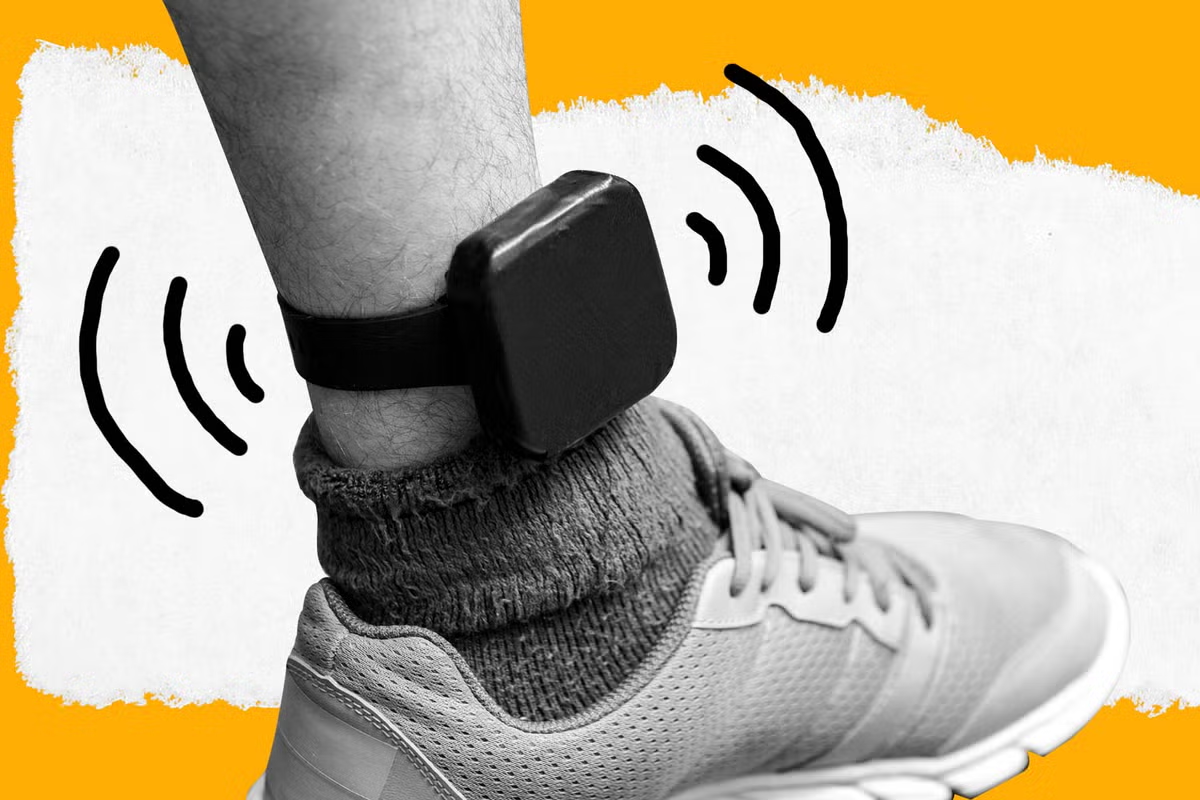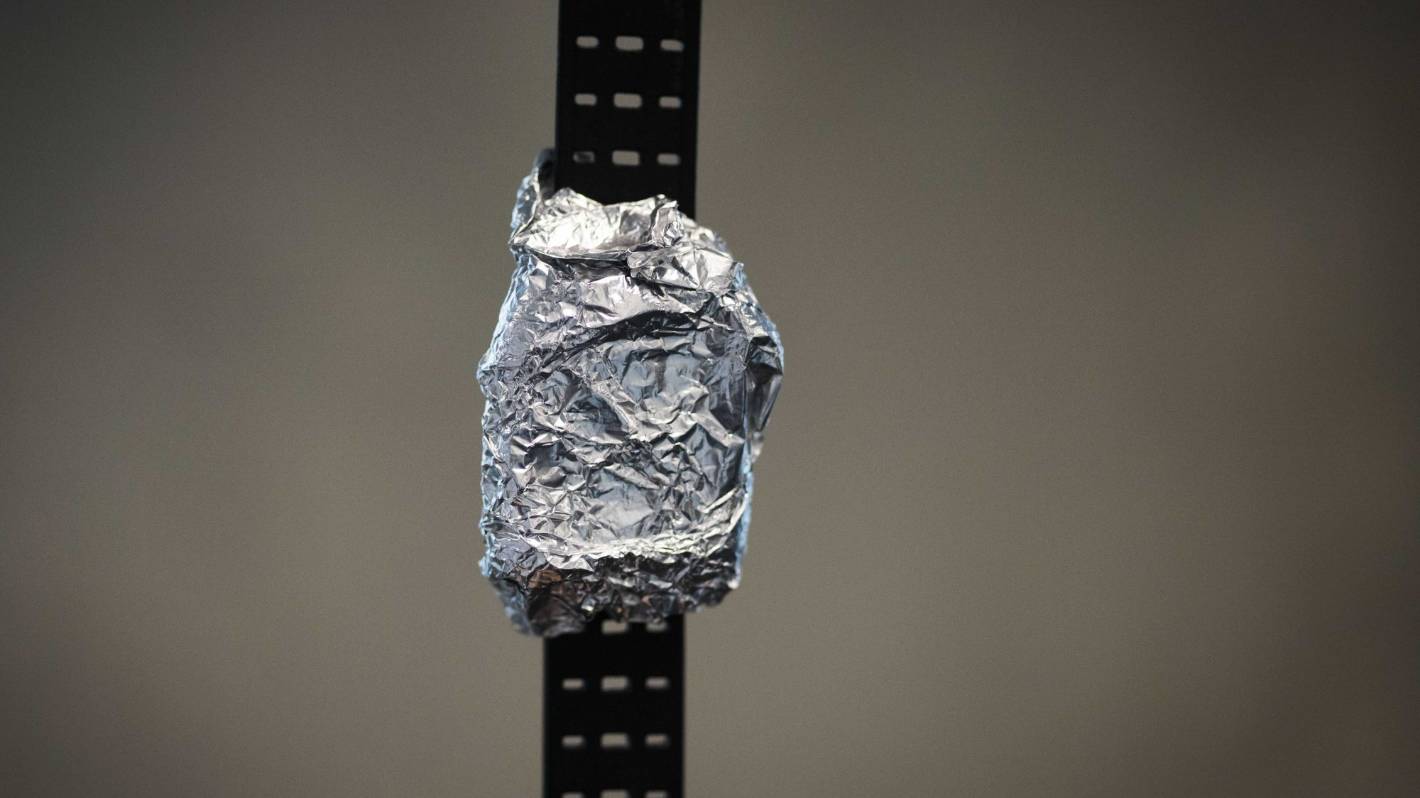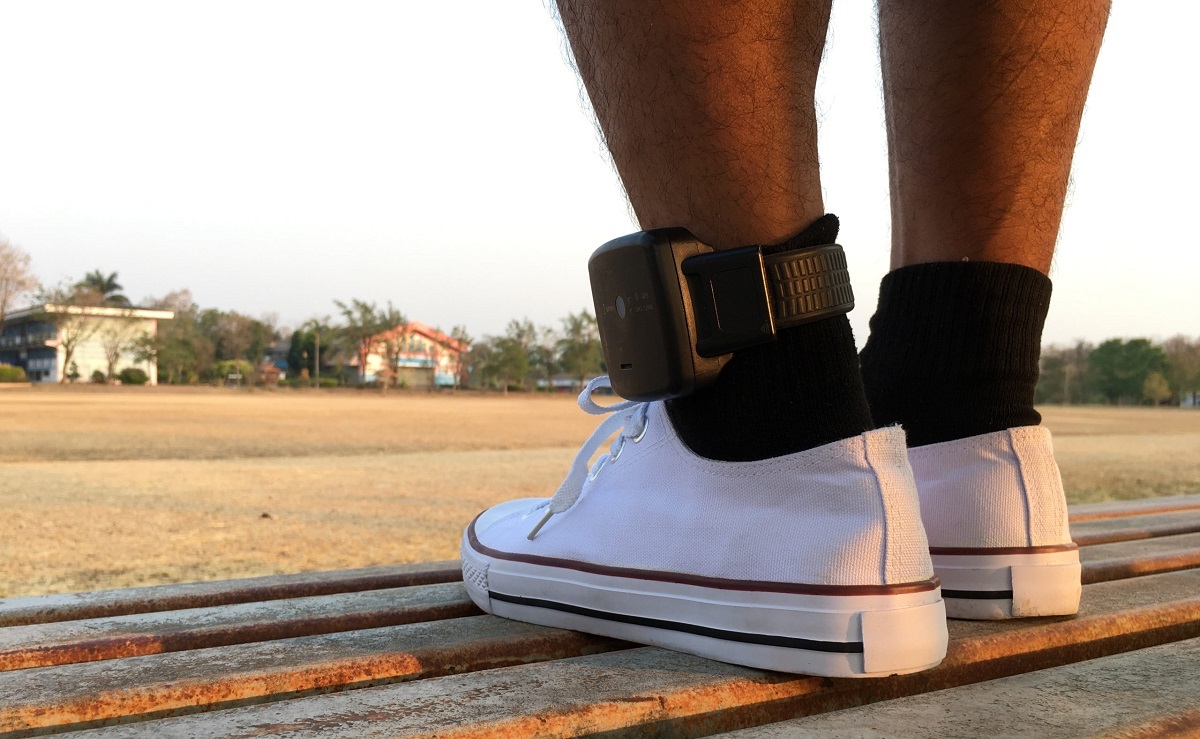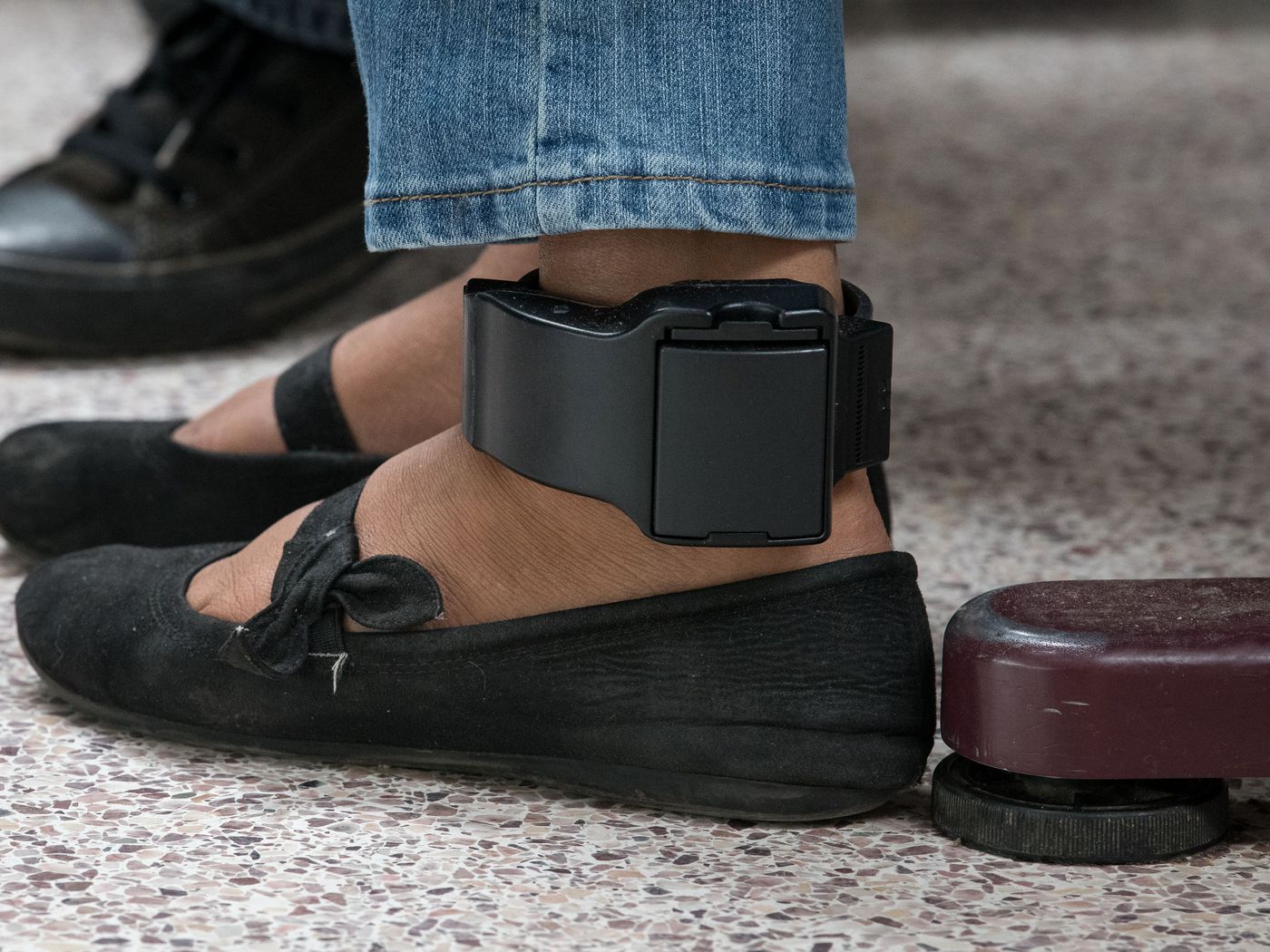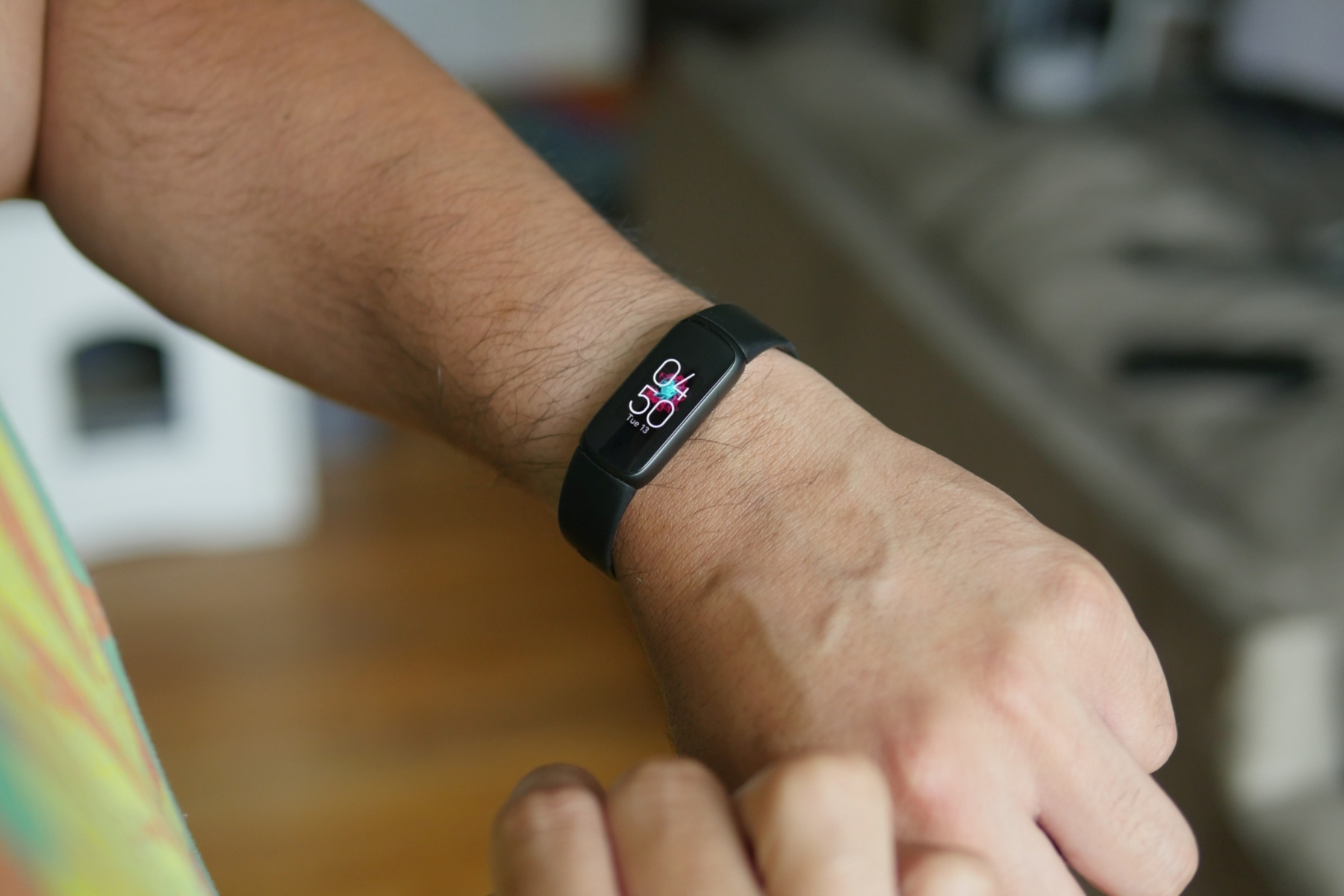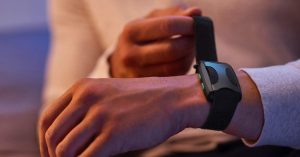Introduction
Ankle monitors, also known as electronic monitoring devices, have become a common tool in the criminal justice system. These devices are worn on the ankle of individuals who are placed under house arrest, probation, or parole, providing a way to monitor their movements and ensure compliance with court-ordered restrictions. While ankle monitors play a crucial role in enhancing public safety and keeping track of offenders, there are instances where wearers may experience unexpected vibrations coming from the device.
The sudden vibration of an ankle monitor can be alarming and confusing for the wearer. It is essential to understand the reasons behind these vibrations to avoid unnecessary anxiety and confusion. In this article, we will delve into the common causes behind ankle monitor vibrations and explore possible troubleshooting steps to address the issue.
By understanding the various factors that may trigger ankle monitor vibrations, individuals can gain better insight into the functioning of these devices and take appropriate action when needed. It is important to note that ankle monitors are designed to be reliable and accurate, and any vibrations or alerts are usually indicators of specific situations or events.
Next, we will explore the different reasons why ankle monitors may vibrate and examine some of the potential solutions or actions that can be taken in response. By familiarizing ourselves with these possibilities, we can navigate the unexpected vibrations and ensure that our ankle monitors are functioning as intended.
Understanding ankle monitors
Ankle monitors, also known as electronic monitoring devices, are wearable devices that track the location and movements of individuals who are subject to court-ordered supervision. These devices consist of a GPS receiver, a cellular transceiver, and various sensors that monitor wearer’s activities and transmit data to a monitoring center. Ankle monitors are typically used as an alternative to incarceration, allowing individuals to serve their sentences while living in the community.
These monitoring devices are lightweight and discreet, designed to be worn around the ankle. They are equipped with tamper-detection features to ensure that any attempt to remove or tamper with the device is quickly detected and reported. The ankle monitor communicates with a monitoring service through cellular networks or RF (radio frequency) technology, providing real-time location tracking and data transmission.
Ankle monitors are an important tool in the criminal justice system as they help in maintaining public safety, facilitating reintegration, and monitoring compliance with court orders. They allow individuals to maintain employment, attend rehabilitation programs, and fulfill other responsibilities while still being supervised.
These devices are capable of recording the wearer’s movements, such as where they are, how long they stay at a particular location, and if they deviate from permitted zones. In addition to location tracking, ankle monitors may also have features like continuous alcohol monitoring, curfew enforcement, and remote breath testing.
It is important to note that ankle monitors should not be considered as punishment, but rather as a means of accountability and supervision. The data collected by ankle monitors are used by monitoring agencies and the court system to ensure compliance with the terms of house arrest, probation, or parole.
Understanding the functionality and purpose of ankle monitors is crucial in comprehending the reasons behind vibrations and alerts that may occur. With a better understanding of ankle monitor technology, we can now explore the common causes of vibrations and potential troubleshooting steps in the following sections.
Common reasons for vibrations
Ankle monitors can vibrate for various reasons, each indicating a specific event or situation. It is essential to be aware of these common causes to better understand why the device may be vibrating. Here are some of the most common reasons:
- Low battery: One of the primary reasons for vibrations is a low battery. Ankle monitors typically have a limited battery life, and when the battery level drops below a certain threshold, the device may vibrate to alert the wearer to charge it. If you experience vibrations, it is wise to check the battery level and promptly charge the device to avoid any disruptions in monitoring.
- Signal loss: Another reason for vibrations is the loss of cellular or radio frequency (RF) signal. Ankle monitors rely on the connectivity provided by cellular networks or RF technology to transmit data. If the connection is lost due to being in an area with poor reception or technical issues, the device may vibrate to indicate the loss of signal. In such cases, it is recommended to move to an area with better signal strength or contact the monitoring center for further instructions.
- Tampering or removal attempts: Ankle monitors are designed to detect any attempts of tampering or removal. If someone tries to tamper with the device, such as cutting the strap or interfering with its components, the ankle monitor will vibrate to alert the wearer and monitoring authorities. This serves as a deterrent to prevent individuals from tampering with the device, as any such actions can result in penalties or even additional charges. If you suspect tampering, it is crucial to report it immediately to the monitoring agency.
- Violation of schedule: Ankle monitors are programmed with specific schedules and restrictions that must be followed by the wearer. If there is a violation, such as leaving the designated area or being out past curfew, the ankle monitor may vibrate to alert the wearer of the breach. These vibrations serve as reminders to adhere to the scheduled activities and comply with the court-ordered restrictions. If you receive vibrations due to a violation, it is important to rectify the situation promptly and inform your supervising officer.
By understanding these common causes of ankle monitor vibrations, individuals can better identify the underlying reasons behind the alerts and take the necessary actions. It is important to note that the vibrating nature of ankle monitors is intended to ensure compliance and maintain accountability in the monitoring process. In the next section, we will explore how alerts and notifications are handled in ankle monitoring systems.
Low battery
One of the most common reasons for ankle monitor vibrations is a low battery. Ankle monitors rely on batteries to power their GPS tracking, communication, and monitoring functions. When the battery level drops below a certain threshold, the device is programmed to vibrate as a signal that it needs to be charged.
Low battery notifications are essential as they ensure the continuous operation of the ankle monitor and prevent any interruptions in monitoring. To avoid battery-related issues and the potential consequences of a dead ankle monitor, users should regularly check the battery level and charge the device as needed.
Typically, ankle monitors have varying battery life depending on the device model, usage patterns, and settings. Most devices can last anywhere from 24 hours to several days on a full charge. It is crucial to familiarize oneself with the specific battery life of the ankle monitor being used and plan charging accordingly.
Charging an ankle monitor is a straightforward process. Most devices come with a charger and a charging cable that is connected to a power source, such as an electrical outlet. The charging port is usually located on the ankle monitor unit itself. When plugged in, the device will begin charging, and the battery level indicator will show the progress of the charging process.
Proactively managing the ankle monitor’s battery life is important to prevent any disruptions in monitoring. Here are some tips to optimize the battery life and ensure the ankle monitor functions properly:
- Charge the ankle monitor regularly: Make it a routine to charge the device at specific times, such as overnight or during periods where it is not being actively used. This will help ensure that the ankle monitor is always functioning optimally.
- Follow the manufacturer’s guidelines: Read the user manual or guidelines provided by the manufacturer to understand the recommended charging practices for the specific ankle monitor model being used.
- Avoid extreme temperatures: Extreme temperatures, both hot and cold, can affect battery performance. It is best to avoid exposing the ankle monitor to extreme temperatures and charge it in a moderate environment.
- Use power-saving features: Some ankle monitors may have power-saving features that can help extend the battery life. Check the device settings to enable any power-saving options available.
By being mindful of the battery life of an ankle monitor and following these tips, users can minimize the instances of low battery vibrations and ensure continuous monitoring without interruptions. It is important to contact the monitoring agency if there are persistent battery-related issues or if the ankle monitor requires a replacement battery.
Signal loss
Signal loss is another common reason for ankle monitor vibrations. Ankle monitors rely on cellular networks or radio frequency (RF) technology to establish a connection with the monitoring center and transmit important data, such as location information and alerts. However, there are situations where the device may experience a loss of signal, leading to vibrations as an indicator of the connectivity issue.
A loss of signal can occur for various reasons, including being in an area with poor reception or experiencing technical difficulties. It is important to understand that signal loss does not necessarily mean that the ankle monitor is malfunctioning. In fact, ankle monitors are designed to recognize and respond to signal loss to ensure accurate monitoring and data transmission.
If you experience vibrations due to a loss of signal, here are some steps you can take to address the issue:
- Move to a location with better signal: If you are in an area with poor reception, try moving to a different location to see if the signal strength improves. Ankle monitors need a stable connection to function properly, so finding a spot with better signal coverage can help restore the connection.
- Contact the monitoring center: If the signal loss persists even after moving to a different location, it is recommended to contact the monitoring center and report the issue. They may be able to provide further guidance or troubleshoot the problem remotely.
- Check for technical issues: In some cases, signal loss may be due to technical issues with the ankle monitor itself. Ensure that the device is in good condition, with no physical damage or loose connections. If you suspect a technical problem, notify the monitoring center for assistance.
- Consider alternative communication methods: In situations where cellular networks are unreliable or not available, some ankle monitors may have the option to use other communication methods, such as Wi-Fi or landline connections. Consult the user manual or reach out to the monitoring center to explore alternative communication options.
It is important to note that ankle monitors are designed to detect and report signal loss to ensure the accuracy and integrity of the monitoring data. Vibrations due to signal loss serve as a prompt for users to take necessary action and restore connectivity. By following the steps mentioned above and staying in communication with the monitoring center, users can address signal loss issues effectively.
Tampering or removal attempts
Ankle monitors are equipped with tamper-detection features to monitor any attempts of tampering or removal. These features are crucial in maintaining the integrity of the monitoring process and ensuring that wearers comply with court-ordered restrictions. In the event of tampering or removal attempts, the ankle monitor may vibrate as an alert to both the wearer and the monitoring authorities.
Tampering or removal attempts can take various forms, including cutting the strap, trying to disable the device, or interfering with its components. However, it is important to note that tampering with or removing the ankle monitor is a violation of the rules and can result in serious consequences, such as additional charges or revocation of probation or parole.
If you suspect tampering or receive vibrations indicating tampering attempts, it is crucial to take the following steps:
- Notify the monitoring agency: Immediately inform the monitoring agency about the situation. They have protocols in place to handle tampering incidents and will guide you on the necessary actions to take.
- Do not attempt to fix or remove the device yourself: It is important to avoid further tampering with the ankle monitor. Tampering with the device can lead to more severe consequences and may affect the outcome of your case.
- Cooperate with authorities: The monitoring agency will work with law enforcement and relevant authorities to address the tampering incident. Be prepared to provide any necessary information and cooperate fully during the investigation.
- Document any evidence: If possible, document any evidence related to the tampering incident. This may include photographs, timestamps, or any other relevant information that can help in the investigation.
- Keep records of communication: Maintain records of all communication with the monitoring agency, law enforcement, and any other parties involved in the incident. These records can be crucial for documenting your cooperation and providing a clear timeline of events.
It is important to remember that tampering with or attempting to remove an ankle monitor can have serious legal consequences. Vibrations caused by tampering alerts serve as a reminder of the strict monitoring standards in place and the consequences of non-compliance. By promptly reporting any tampering incidents and cooperating with the authorities, individuals can ensure a swift and appropriate response to the situation.
Violation of schedule
Ankle monitors are programmed with specific schedules and restrictions that individuals must adhere to as part of their court-ordered supervision. These schedules may include curfew hours, restricted zones, or designated check-in times. If a wearer violates any of these scheduled activities, the ankle monitor may vibrate as an alert to indicate the breach.
Vibrations caused by a violation of schedule serve as reminders to the wearer to comply with the court-ordered restrictions and fulfill their obligations. It is essential to take violations seriously, as they can have serious consequences, including additional charges or revocation of probation or parole.
If you receive vibrations indicating a violation of schedule, it is important to take immediate action:
- Rectify the situation: If you realize that you have violated a schedule or restriction, take immediate steps to rectify the situation. Return to the designated area, adhere to curfew hours, or fulfill any missed requirements as soon as possible.
- Contact your supervising officer: Communicate with your supervising officer or the monitoring agency to inform them of the violation and seek guidance on how to address it. They may provide specific instructions on what steps you need to take and the consequences you may face.
- Take responsibility: It is crucial to take responsibility for any violations and cooperate with your supervising officer or the court. Be honest about the circumstances surrounding the violation and demonstrate your commitment to compliance moving forward.
- Request clarification if needed: If you are uncertain about any specific requirements or schedules, seek clarification from your supervising officer or the monitoring agency. Understanding the expectations will help prevent future violations.
- Make a plan to avoid future violations: Learn from the violation and develop strategies to prevent similar incidents in the future. This may include setting reminders, adjusting your schedule, or seeking support from rehabilitation programs or counseling services.
It is important to remember that ankle monitors are intended to support individuals in their rehabilitation and reintegration efforts. Compliance with the court-ordered schedules and restrictions is crucial for a successful outcome. By taking immediate action, being accountable, and making a plan to avoid future violations, individuals can demonstrate their commitment to their supervision and rehabilitation process.
Alerts and notifications
Alerts and notifications play a vital role in ankle monitoring systems. They provide important information to wearers and monitoring authorities, ensuring the proper functioning of the ankle monitor and compliance with court-ordered restrictions. Understanding how alerts and notifications are handled can help individuals effectively respond to the different situations that may arise.
Ankle monitors are designed to generate various types of alerts and notifications, depending on the specific circumstances. These alerts can be in the form of vibrations, audible sounds, or messages displayed on accompanying devices. Here are some common types of alerts and notifications:
- Violation alerts: When a wearer violates a schedule, breaches a restriction, or deviates from permitted areas, the ankle monitor will generate an alert to indicate the violation. These alerts remind individuals of the need to comply with their court-ordered restrictions.
- Low battery notifications: As mentioned earlier, ankle monitors will vibrate or display a notification when the battery level reaches a certain threshold. These notifications prompt wearers to charge the device to ensure uninterrupted monitoring.
- Tampering or removal alerts: Ankle monitors are equipped with tamper-detection features to detect and report any attempts at tampering or removal. If someone interferes with the device, the ankle monitor will alert both the wearer and the monitoring authorities, providing a prompt response to potential tampering incidents.
- Communication failure notifications: In cases where there is a loss of signal or communication with the monitoring center, ankle monitors may generate notifications to indicate the connectivity issue. These alerts prompt users to take necessary actions to restore the connection.
It is crucial to respond appropriately to alerts and notifications generated by ankle monitors. Here are some key steps to follow:
- Take immediate action: When you receive an alert or notification, promptly assess the situation and take appropriate action. Responding timely can help rectify violations, address technical issues, or prevent further problems.
- Follow instructions: Pay close attention to any accompanying instructions provided with the alert or notification. These instructions may guide you on the actions required to address the specific situation.
- Contact the monitoring agency: If necessary, reach out to the monitoring agency or your supervising officer to report the alert or seek clarification. They can provide further guidance or troubleshoot the issue to ensure proper monitoring.
- Maintain documentation: Keep a record of any alerts or notifications received, along with the actions taken in response. This documentation can serve as proof of compliance and help address any potential misunderstandings in the future.
By understanding and properly responding to alerts and notifications, wearers can ensure compliance, maintain the integrity of the monitoring process, and work towards successful rehabilitation and reintegration.
Troubleshooting steps
While ankle monitors are designed to be reliable and accurate, occasional issues may arise that require troubleshooting. Understanding the troubleshooting steps can help individuals address common problems effectively and ensure the proper functionality of their ankle monitors. Here are some general troubleshooting steps to consider:
- Restart the device: Sometimes, simply restarting the ankle monitor can resolve minor issues. Turn off the device, wait for a few moments, and then turn it back on. This can help reset any temporary glitches or software errors.
- Check the straps and connections: Ensure that the ankle monitor is securely fastened and that the straps are not too tight or too loose. Additionally, check all connections to make sure they are properly connected and not damaged or loose.
- Confirm location and signal strength: If you suspect a location or signal-related issue, try moving to a different area with better signal strength. Avoid areas with interference or obstructions that may affect the ankle monitor’s GPS or cellular connectivity.
- Charge the device: If you receive low battery notifications or suspect a drained battery, charge the ankle monitor according to the manufacturer’s instructions. A fully charged battery ensures uninterrupted monitoring.
- Consult the user manual: Refer to the user manual or guidelines provided by the manufacturer for specific troubleshooting techniques and solutions. These resources often outline common issues and their corresponding resolutions.
- Reach out to the monitoring agency: If troubleshooting on your own does not resolve the issue, contact the monitoring agency or your supervising officer. They can provide further assistance and guide you through any additional steps or actions required.
- Document the problem: Maintain a record of the issue, including any relevant details, error messages, or observations. This documentation can be helpful when seeking support from the monitoring agency or manufacturer.
- Follow the guidance from authorities: If troubleshooting efforts do not resolve the problem, it is essential to follow the instructions provided by the monitoring agency or your supervising officer. They may arrange for further evaluation or replacement of the ankle monitor.
Remember, ankle monitors are sophisticated devices, and some problems may require expert assistance. It is important to cooperate with the monitoring agency and follow their guidance throughout the troubleshooting process. By promptly addressing and resolving issues, individuals can ensure effective monitoring and remain compliant with their court-ordered restrictions.
Conclusion
Ankle monitors have become an integral part of the criminal justice system, providing a means to monitor individuals who are subject to court-ordered supervision. While these devices are designed to be reliable and accurate, wearers may experience vibrations or alerts at times, indicating specific events or situations.
By understanding the common reasons behind ankle monitor vibrations, such as low battery, signal loss, tampering or removal attempts, and violations of schedule, individuals can navigate these situations with greater ease and effectiveness. Taking appropriate actions, such as charging the device, addressing signal or connectivity issues, reporting tampering incidents, and rectifying violations, ensures the integrity of the monitoring process and compliance with court-ordered restrictions.
In addition, being familiar with the troubleshooting steps and promptly addressing any issues that arise can help individuals maintain proper functionality of their ankle monitors. It is crucial to follow the guidance of the monitoring agency or supervising officer and document any problems encountered for reference and support during the troubleshooting process.
Ankle monitors are powerful tools that enhance public safety, support rehabilitation efforts, and provide individuals with opportunities to fulfill their responsibilities while under supervision. By understanding the functioning and purpose of ankle monitors, individuals can work towards successful rehabilitation and reintegration while complying with their court-ordered restrictions.
As technology continues to evolve, ankle monitoring systems will likely become even more advanced and efficient. It is important for wearers to stay informed about any updates or changes that may occur in ankle monitor technology and instructions provided by the monitoring agency or manufacturer.
Overall, ankle monitors are valuable assets that contribute to the effective supervision and rehabilitation of individuals in the criminal justice system. By understanding the reasons behind vibrations, staying proactive in maintaining battery life, addressing connectivity issues, and promptly resolving any problems, wearers can navigate the monitoring process with confidence and work towards a successful transition back into the community.







